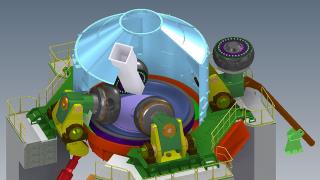In preparation for a major project at Cementir’s Taranto cement plant in southern Italy, the dilemma of whether to arrange the two new vertical mills for separate grinding or intergrinding arose. With the help of milling specialists Loesche, an extensive test programme was carried out to find the best option in terms of cement performance, flexibility and cost effectiveness. By Claus Bech and Sergio Ferreiro, Cementir Holding, Italy, Bernhard Schröder and Dr Karl-Heinrich Zysk, Loesche GmbH, Germany.
Apart from the typical list of advantages and disadvantages related to both separate grinding and intergrinding, cement performance was the focal point of a more detailed study by Cementir for its Taranto plant. The cement producer wanted to determine the possibility of producing CEM III/A that could develop an early (two-day) strength of 25MPa. The main objective was to produce a slag cement (CEM III/A) with similar properties to those of a CEM II/A (LL), the most common cement type consumed on the local market. Early strength and the avoidance of performance enhancing additives were key factors for consideration.
